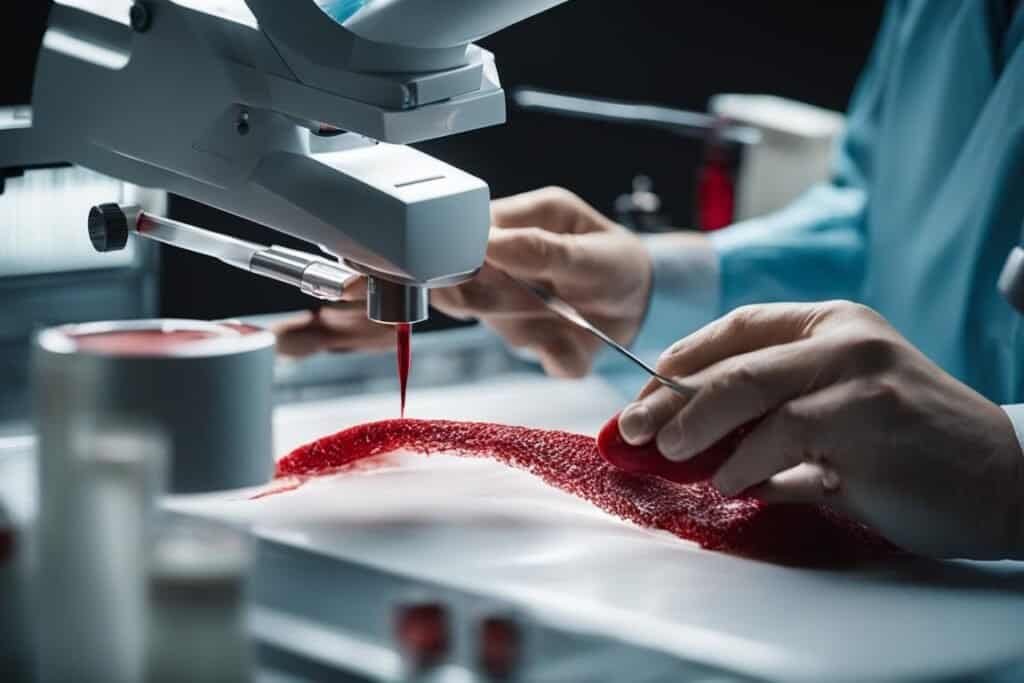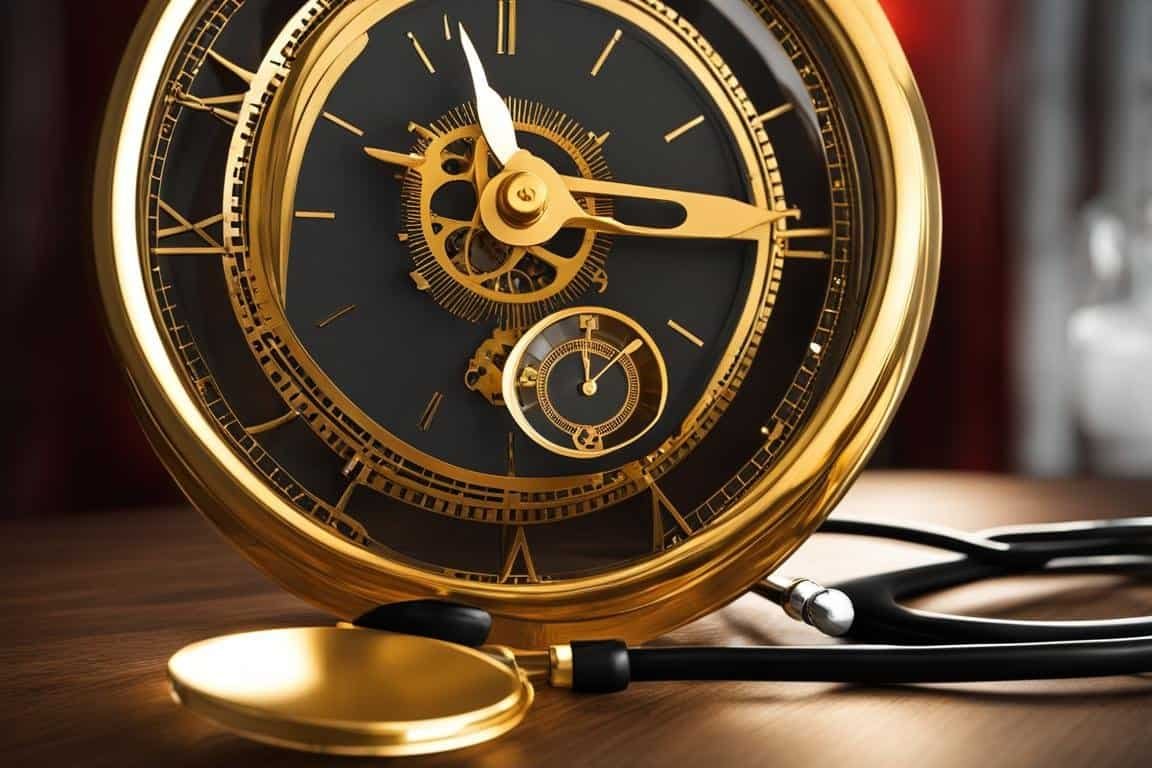The first hour after the onset of a heart attack, also known as the golden hour, is a critical period that can determine the outcome of the patient. During this time, the prompt intervention by a cardiologist plays a crucial role in minimizing the damage to the heart and saving lives. The importance of a cardiologist during the golden hour cannot be overstated, as most deaths and complications occur within this time frame.
When experiencing a heart attack, time is of the essence. The faster a person reaches the hospital and receives treatment, the greater the chances of a successful recovery. The role of a cardiologist during this golden hour is to provide emergency care, including interventions and treatments, to prevent further damage to the heart muscle and mitigate life-threatening complications.
Medical professionals with expertise in cardiology are trained to identify and manage heart attack emergencies. They are equipped with the knowledge and skills to administer clot-dissolving medications or perform emergency cardiac procedures such as primary angioplasty, which can restore blood flow to the heart. Their prompt action can significantly improve patient outcomes and increase the chances of survival.
Furthermore, cardiologists have a deep understanding of the complexities of the cardiovascular system. They can assess the individual’s overall condition, identify risk factors, and recommend appropriate preventive measures. By working closely with patients, they can help prevent heart attacks and minimize the need for emergency care during the golden hour.
Key Takeaways:
- The golden hour after a heart attack is crucial, and timely intervention by a cardiologist is vital for minimizing damage to the heart.
- Cardiologists are trained to provide emergency care and administer clot-dissolving medications or perform emergency cardiac procedures.
- Prompt action by a cardiologist during the golden hour can greatly improve patient outcomes and increase chances of survival.
- Cardiologists also play a crucial role in preventive measures, assessing risk factors, and recommending lifestyle changes to prevent heart attacks.
- Seeking immediate medical assistance and reaching the hospital promptly are essential steps during a heart attack emergency.
Understanding the Importance of the Golden Hour
The golden hour is a critical window of opportunity that significantly impacts a patient’s survival and quality of life following a heart attack. During this time, the heart muscle starts to die within 80-90 minutes if it doesn’t receive adequate blood flow. Within six hours, irreversible damage can occur to the affected parts of the heart.
Therefore, it is crucial to reach the hospital as soon as possible to reduce the damage and increase the chances of a successful recovery. Emergency care by a cardiologist during this golden hour plays a vital role in preventing complications and preserving the patient’s life.
The image above visually highlights the urgency and importance of timely intervention during a heart attack. By understanding and recognizing the significance of the golden hour, you can take immediate action and seek medical assistance promptly to minimize the damage to your heart.
Steps to Take During the Golden Hour
Recognizing the symptoms of a heart attack is crucial during the golden hour. Common symptoms include:
- Heaviness or pressure in the chest
- Radiating pain to other body parts such as the jaw or left arm
- Shortness of breath without chest discomfort (especially in diabetics)
- Severe abdominal pain
If you experience any of these symptoms, it is essential to take immediate action. Do not ignore them or delay seeking help.
Call for help immediately and seek medical assistance without hesitation. The faster you reach the hospital, the sooner you can receive the necessary interventions and treatments to limit the damage caused by the heart attack.
Recognizing Heart Attack Symptoms
Here are the key signs of a heart attack that you should be aware of:
- Chest discomfort: A feeling of heaviness, pressure, squeezing, or pain in the chest that lasts for more than a few minutes.
- Radiating pain: Pain that spreads to the left arm, back, jaw, or neck.
- Shortness of breath: Difficulty breathing or feeling breathless without any obvious cause.
- Nausea, vomiting, or indigestion: Feeling sick to your stomach, vomiting, or experiencing persistent indigestion that is not relieved by antacids.
- Cold sweat: Suddenly breaking into a cold sweat, even when the temperature is not excessively hot.
- Fatigue: Unusual tiredness or exhaustion that cannot be explained by physical exertion or lack of sleep.
If you experience any of these symptoms, it is essential to seek immediate medical help by calling emergency services or going to the nearest hospital. Time is critical in the golden hour of a heart attack, and prompt action can significantly improve your chances of a positive outcome.
Remember, never delay seeking help if you suspect you are having a heart attack.
Immediate Intervention in a Heart Attack
During a heart attack, the primary aim is to remove the clot that is blocking a blood vessel in the heart. Chewing a 300/325mg aspirin tablet immediately can help dissolve the clot. Once at the hospital, doctors will administer a thrombolytic medicine or perform a procedure called primary angioplasty.
In primary angioplasty, a diagnostic coronary angiogram is performed to identify the site of the blockage, and a stent is deployed in the artery to restore blood flow. This procedure is preferred in most scenarios, but it can only be done in hospitals with a cardiac catheterization laboratory and experienced doctors. Other supportive therapies are also initiated simultaneously to stabilize the patient’s condition.
Immediate intervention is crucial in a heart attack to minimize the damage to the heart muscle and improve the chances of a successful recovery. Chewing an aspirin tablet helps in clot removal and restores blood flow to the heart. Once at the hospital, doctors can administer thrombolytic medicine to dissolve the clot or perform primary angioplasty.
Primary angioplasty involves performing a diagnostic coronary angiogram to identify the blockage site. A stent is then deployed in the artery to restore blood flow, ensuring the oxygen supply to the heart muscle. This procedure is highly effective but can only be performed in hospitals equipped with a cardiac catheterization laboratory and experienced doctors.

| Immediate Intervention Options | Benefits |
|---|---|
| Chewing an aspirin tablet | – Helps dissolve the clot – Restores blood flow |
| Thrombolytic Medicine | – Dissolves the clot – Restores blood flow |
| Primary Angioplasty | – Diagnostic coronary angiogram for blockage identification – Stent deployment to restore blood flow |
The immediate intervention measures play a crucial role in preventing further damage to the heart and improving patient outcomes. These emergency procedures aim to remove the clot that is blocking the blood vessel, allowing the heart muscle to receive proper blood flow and oxygen. It is essential to seek medical attention promptly to receive the necessary interventions and restore heart function.
Importance of Early Medical Assistance
During a heart attack, time is of the essence. Seeking early medical assistance can greatly improve the chances of survival and minimize the damage to the heart. It is crucial to take immediate action and follow the right steps to ensure prompt and effective treatment.
Calling for an Ambulance
When experiencing symptoms of a heart attack, calling for an ambulance is the safest and fastest way to reach the hospital. Ambulance services are equipped with skilled medical professionals and specialized equipment to provide the necessary care en route to the hospital.
Reaching a Hospital with Cardiac Care Facilities
It is important to reach a hospital with cardiac care facilities as early as possible. These hospitals are well-equipped to handle cardiac emergencies and have specialized staff and equipment to provide immediate care and interventions. Store the contact numbers of nearby hospitals with cardiac care facilities in your phone for easy access during an emergency.
Not Driving Oneself During a Heart Attack
It is crucial not to drive oneself during a heart attack. The symptoms of a heart attack can rapidly worsen, impairing one’s ability to drive safely. Driving oneself not only puts the individual at risk but also endangers the lives of others on the road. Instead, it is recommended to utilize an ambulance service for safe transportation to the hospital.
By seeking early medical assistance, calling for an ambulance, and reaching a hospital with cardiac care facilities, you can significantly increase the chances of receiving timely and appropriate care. Remember, every minute counts during a heart attack, and taking swift action can make a life-saving difference.
Preventive Measures for Heart Attack
Prevention is always better than dealing with a heart attack. Leading a heart-healthy lifestyle, managing risk factors, and regular check-ups with a cardiologist are key steps in reducing the chances of experiencing a heart attack and the need for emergency intervention during the golden hour.
An essential component of preventing heart attacks is adopting a heart-healthy lifestyle. This includes maintaining a balanced diet rich in fruits, vegetables, whole grains, and lean proteins. Limiting the intake of saturated and trans fats, cholesterol, and sodium is also crucial for heart health. Incorporating regular physical activity into your routine, such as brisk walking, cycling, or swimming, can help strengthen the heart and improve overall cardiovascular fitness.
Managing risk factors is equally important in preventing heart attacks. High blood pressure, diabetes, high cholesterol, obesity, and smoking are all significant risk factors that can contribute to the development of heart disease. Making lifestyle modifications and working closely with your cardiologist can help manage and control these risk factors. This may involve taking prescribed medications, such as antihypertensives or cholesterol-lowering drugs, following a healthy diet plan, and engaging in regular exercise.
Regular check-ups with an expert cardiologist play a vital role in preventing heart attacks. Cardiologists have the knowledge and expertise to assess your cardiovascular health, detect any underlying risk factors or early signs of heart disease, and provide personalized guidance and treatment plans. These routine check-ups allow for early detection and management of risk factors, helping to prevent heart attacks and other cardiovascular complications.
By leading a heart-healthy lifestyle, managing risk factors, and scheduling regular check-ups with a cardiologist, you can take proactive measures to protect your heart and reduce the likelihood of experiencing a heart attack. Remember, prevention is the key to maintaining a healthy heart and overall well-being.

Adapting to a Heart Attack Emergency Situation
In a heart attack emergency situation where a person suddenly collapses, immediate action is crucial. Follow these steps to provide first aid and ensure the patient receives timely medical care:
-
Stay calm: In a high-stress situation, it’s important to stay calm and focused.
-
Lie the patient down: Place the patient on their back, with their head slightly elevated.
-
Check the patient’s heartbeat: Listen carefully to the patient’s chest to determine if their heart is still beating.
-
Check for breathing: Look for signs of breathing, such as chest movements or the rise and fall of the patient’s abdomen.
-
If the patient is not breathing: Start chest compressions immediately. Place the heel of your hand on the center of the patient’s chest, just below the nipple line. Interlock your fingers and push hard and fast, with a rate of about 100-120 compressions per minute.
-
Mouth-to-mouth respiration: If you are trained in CPR and it is safe to do so, perform mouth-to-mouth respiration along with chest compressions.
-
Call for an ambulance: Dial the emergency helpline and provide them with accurate details about the patient’s condition.
-
Shift the patient to a nearby hospital: If the patient’s condition permits, carefully move them to a nearby hospital with cardiac care facilities.
-
Follow medical instructions: Once the patient is in the emergency care, allow the medical professionals to take over and follow their instructions.
Remember, responding promptly during a heart attack emergency can significantly improve the chances of survival and recovery. By providing immediate first aid, calling for an ambulance, and shifting the patient to a nearby hospital, you play a crucial role in ensuring that the patient receives the timely and specialized medical care they need.
Conclusion
The crucial role of a cardiologist during the golden hour of a heart attack cannot be overstated. Timely intervention and prompt medical assistance provided by a cardiologist play a vital role in reducing damage to the heart and improving patient outcomes. The first hour after the onset of a heart attack is critical, as it is during this time that the heart muscle starts to die without adequate blood flow. Fast action can reverse the effects and lead to near-complete recovery.
Recognizing the symptoms of a heart attack and seeking immediate help are crucial steps in maximizing the chances of survival during this critical period. It is essential to reach the hospital promptly to ensure that necessary interventions and treatments can be initiated without delay. Minimizing the time between the onset of symptoms and medical intervention can significantly reduce damage to the heart and prevent life-threatening complications.
Adhering to a heart-healthy lifestyle, including managing risk factors such as high blood pressure, diabetes, high cholesterol, obesity, and smoking, is essential in preventing heart attacks. Regular check-ups with a cardiologist are important for early detection and management of these risk factors. By taking preventive measures and leading a healthy lifestyle, the need for emergency care during the golden hour can be minimized, reducing the chances of experiencing a heart attack and improving overall heart health.

